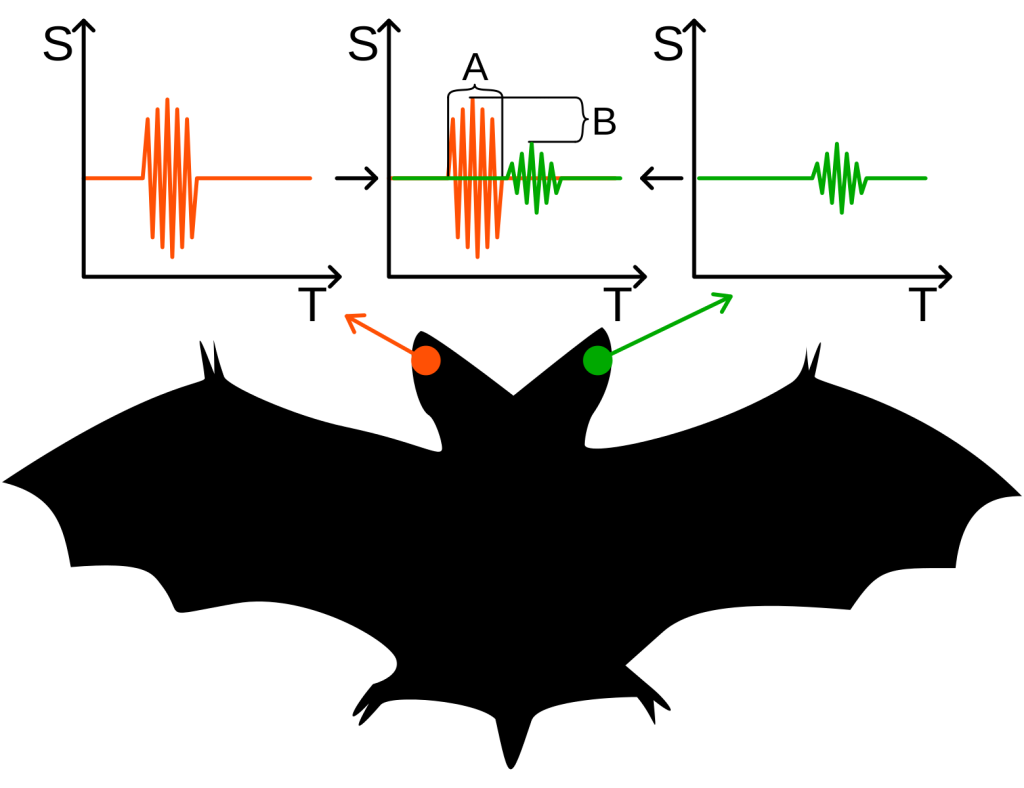Hearing in Complex Environments
63
Learning Objectives
Know that interaural time difference (ITD) is a binaural cue and why.
Understand that neurons in which area are sensitive to ITD (the first place that signals from two ears meet).
Our ability to locate sound sources in space is an impressive feat of neural computation. The two main sources of information both come from a comparison of the sounds at the two ears. The first is based on interaural time differences (ITD) and relies on the fact that a sound source on the left will generate sound that will reach the left ear slightly before it reaches the right ear. Although sound is much slower than light, its speed still means that the time of arrival differences between the two ears is a fraction of a millisecond. The largest ITD we encounter in the real world (when sounds are directly to the left or right of us) are only a little over half a millisecond. With some practice, humans can learn to detect an ITD of between 10 and 20 μs (millionths of a second) (Klump & Eady, 1956).
For the mathematically inclined: If the extra distance to the far ear is 23 cm (0.23 m) across, and sound is traveling at 340 m/s, this timing difference is at most 0.23/340 = 0.000676 seconds—0.676 milliseconds or 686 microseconds. That’s tiny! The smallest difference the ears can notice is 10 microseconds.

When sound waves hit humans ears, a signal is created by both ears independently, which is how the time difference is determined. These signals are sent into the brain and first meet in the superior olivary complex, which is incredibly sensitive. Experimental Psychologist and acoustical scientist Lloyd A. Jeffress proposed a theory stating that there are different detectors for particular ITDs in the brain and each is excited maximally when triggered, which leads to the placement of sound. In 1988, the “coincidence counter circuit” predicted by Jeffress was experimentally discovered in the barn owl. However this specific map of coincidence detectors was undetectable in guinea pigs, leading to the conclusion that optimal coding strategies for the time differences depend on head size as well as frequency of sound. In further support of this hypothesis, it was experimentally determined that for humans, whose heads are large enough to homogeneously distributed coincidence detectors, this also depends on frequency. If a sound is above 400 Hz, the distribution is optimal, but if below 400 Hz, the use of distinct sub-populations are optimal (Harper. & McAlpine 2004).
Cheryl Olman PSY 3031 Detailed Outline
Provided by: University of Minnesota
Download for free at http://vision.psych.umn.edu/users/caolman/courses/PSY3031/
License of original source: CC Attribution 4.0
Adapted by: Joseph Hemenway

